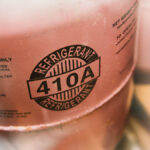Building Automation System Obsolescence: The Reality & The Options
One of the greatest challenges for any facility operating a sophisticated Building Automation System (BAS) is the high cost and sometimes confusing multitude of options available to modernize the system once the platform has reached end-of-life.
Shelf life for most BAS systems is relatively long (10-20 years depending on the brand) and most will outlast other IT and building systems many times over. However, obsolescence is inevitable. That’s why you need a thoughtful, proactive, and budgeted approach with a long-term vision in place before it’s time to retire your BAS, or worse – critical components begin to fail.
Why You Need to Plan Ahead
This article will give a brief overview of the two main options available to facility owners in this situation, but first let’s take a look at why planning for the future is necessary when dealing with an end-of-life system.
The BAS software and hardware are no longer manufactured.
Parts will become difficult, expensive, or impossible to source. Service costs to work on the system will also increase and be more difficult to find as today’s technicians are trained and certified on modern controls.
Legacy systems are sometimes unable to execute today’s complex sequences.
Many legacy systems cannot process the algorithms required to operate buildings efficiently based on current design codes. As a result, your utility bills may already be higher than they should be, and you may be having occupant comfort issues as well. Fortunately, potential energy savings can offset these problems and provide justification for an upgrade via simple or discounted payback periods associated with the project.
Integration becomes a challenge.
Many legacy systems communicate via proprietary protocols and are unable to integrate to modern technologies such as metering and lighting that use open standards to communicate.
Access remains tied to a PC.
Legacy systems often reside on software-based workstations that require access at the PC itself, making it cumbersome to manage a facility or campus of buildings. This can greatly increase operational costs. IT issues can also help justify upgrade projects as many older systems require badly outdated versions of Windows to operate and are a challenge for any IT department to maintain.
Critical components unexpectedly fail.
It’s something you definitely want to avoid since it results in costly downtime and the increased price of emergency repairs.
Your Two Main Modernization Options
Option #1: System Replacement
In this scenario, the field controllers, building controller(s), and central PC are all replaced with modern platforms. To decrease costs, the controls end devices (temperature sensors, damper motors, etc.) and associated wiring, control cabinets and ancillary control devices are reused. In addition to all new field controllers, new network wiring is installed to ensure reliable communications.
Benefits: The system from top-to-bottom will operate as a brand-new system. Assuming the controls end devices to be reused are verified for functionality/accuracy, you will realize cost savings through reuse of these components and the existing system footprint.
Drawbacks: While this is the best solution from a value standpoint, it comes with at higher upfront price tag.
Option #2 : Front-end Upgrade
With this option, the building controller(s) and central PC operating the system are replaced with a modern platform. The obsolete field controls and all connected devices remain. This new platform is backwards-compatible with the obsolete field controllers but also has the ability to support modern technologies for their eventual replacement.
Benefits: There is a lower front end cost than a total system replacement and budgeting for field controller replacements can be done down the road in a phased or as-needed basis. This approach offers almost all of the modern features associated with current systems such as web-based access, advanced global control programming, alarm routing, reporting functions, and support for current technology standard.
Drawbacks: Everything beyond the building controller/server platform will be replaced piecemeal in a series of projects over time. This results in a higher overall cost than replacing the whole system at one time. Additionally, many of the “gremlins” of the existing system may remain if they are related to the legacy field controllers.
Bottom Line Advice
If budget allows, opt for a total system replacement (Option 1). If budget constraints necessitate Option 2, this is still a reliable and cost effective way to get you on the path to a total system replacement, and it gives you the immediate benefits of a modern user interface.
A few more things to consider: There are both manufacturer-specific and “open” options available for these upgrades. Manufacturer-specific options may include a proprietary link to the service provider, but provide a more seamless upgrade. “Open” options may include third party software drivers and hardware/software developed by various manufacturers to achieve the upgrade. This may be more expensive and “clunky” than the manufacturer-specific upgrade (based on the talent level of the integrator), but will provide a better choice of service after the upgrade.
These are multi-faceted and complicated considerations that are dependent on the system scheduled to be upgraded. Hunton Services is available for advanced consultation as needed to ensure the best decision is made for you and your organization. Contact us today.







No comments yet